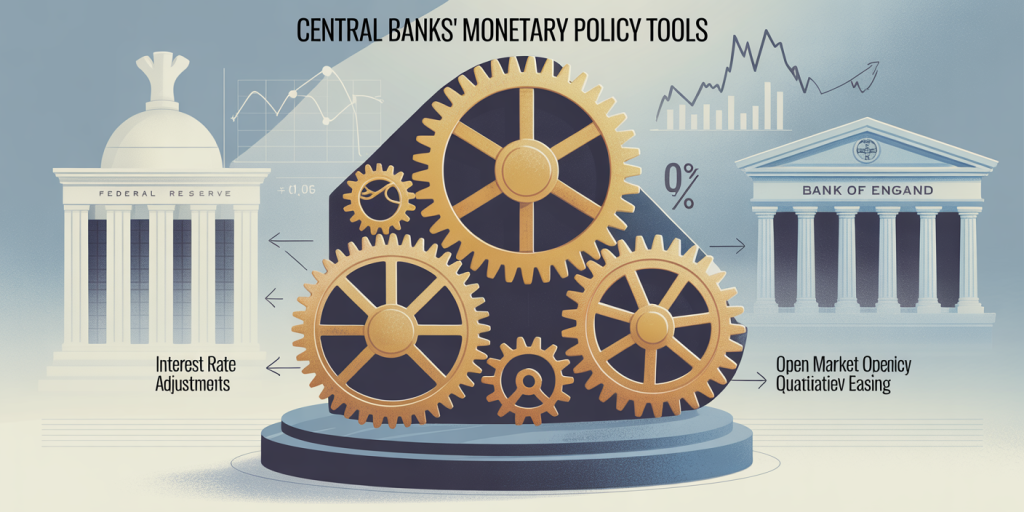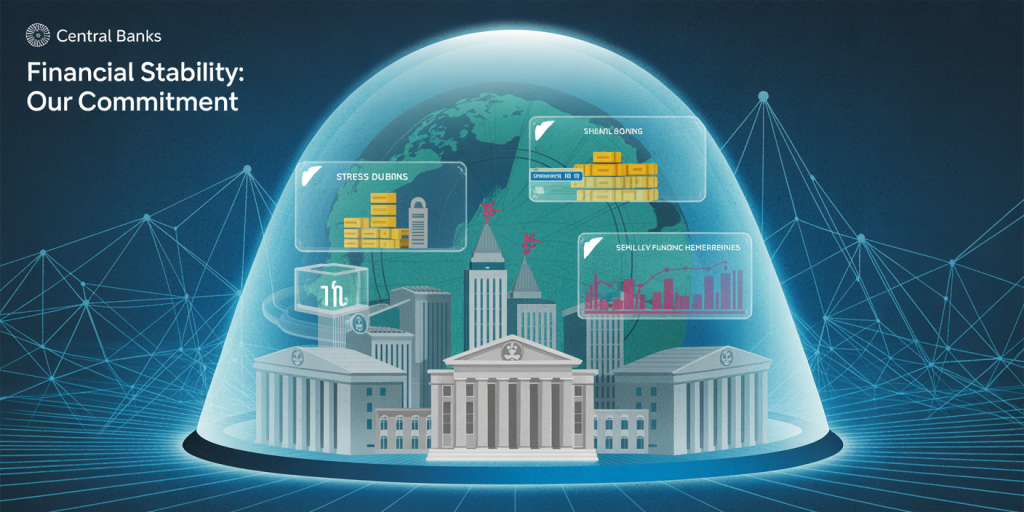Central banks are pivotal institutions within the global financial architecture, influencing economic stability, inflation control, and monetary policy. These entities dictate much of the financial environment that affects individuals, businesses, and governments. Understanding the role of central banks provides insights into how economies operate, how financial systems maintain trust, and how economic crises are mitigated. This comprehensive article explores their multifaceted roles, backed by practical examples, data-driven analysis, and comparative insights.
Understanding Central Banks and Their Core Functions
At their core, central banks act as a regulatory authority for a country’s monetary system. They are institutions responsible for issuing currency, controlling interest rates, managing inflation, and overseeing the banking sector. Unlike commercial banks, which provide services to the public, central banks operate primarily in the interest of the broader economy, ensuring financial stability and economic growth.
A quintessential example is the Federal Reserve (Fed) in the United States, the European Central Bank (ECB) in the eurozone, and the Bank of England (BoE) in the UK. Each of these institutions has a mandate to maintain low and stable inflation, a healthy labor market, and financial stability. For instance, the Fed’s dual mandate focuses on maximum employment and price stability, influencing decisions on interest rates and open market operations accordingly.
Monetary Policy Formulation and Implementation
One of the most critical roles of central banks is the formulation and execution of monetary policy. Through mechanisms such as interest rates adjustments and open market operations, central banks influence the supply of money and credit in the economy. This, in turn, affects consumer spending, investment, inflation rates, and overall economic growth.

For example, during the 2008 global financial crisis, central banks worldwide employed expansionary monetary policies to offset economic contraction. The Fed cut interest rates to near zero and unleashed quantitative easing (QE) programs, purchasing large amounts of government securities to inject liquidity into the financial system. This action stabilized markets and aided recovery. Similarly, the ECB’s negative interest rates and bond-buying initiatives in subsequent years served to stimulate the eurozone economy during times of sluggish growth.
| Central Bank | Interest Rate Policy during 2020 Pandemic | Quantitative Easing Amount (approx.) |
|---|---|---|
| Federal Reserve (USA) | Reduced to 0.00-0.25% | $3.5 trillion |
| European Central Bank | Reduced to negative -0.50% | €1.85 trillion |
| Bank of England (UK) | Reduced to 0.10% | £895 billion |
This comparative table highlights the aggressive monetary strategies to counteract the economic impact of COVID-19, illustrating how central banks exercise tools tailored to their specific economies.
Regulation and Supervision of Financial Institutions
Beyond monetary policy, central banks serve as regulators and supervisors to ensure the soundness and stability of the banking system. They impose capital adequacy requirements, conduct stress tests, and monitor liquidity ratios to mitigate systemic risks. These activities help prevent bank failures that could trigger broader economic instability.
For instance, following the 2007-2008 financial crisis, regulators like the Fed and the ECB implemented more stringent regulations under frameworks such as Basel III. These regulations required banks to maintain higher capital buffers and improve risk management practices. In the US, stress tests conducted annually by the Fed assess banks’ ability to withstand adverse economic conditions, safeguarding depositors’ funds and maintaining financial confidence.
Furthermore, central banks often act as lenders of last resort during crises. During the pandemic, the BoE introduced several emergency funding programs, such as the Term Funding Scheme with additional incentives for small and medium-sized enterprises (SMEs), ensuring that credit continued flowing despite market disruptions.

Issuance and Control of Currency
Central banks hold exclusive rights to issue legal tender money, controlling the national currency supply. This monopoly is central to maintaining trust in the monetary system and avoiding inflationary spirals caused by uncontrolled issuance. The control of currency supply also provides a mechanism for influencing economic activity.
A real-world illustration can be observed in Zimbabwe’s currency crisis during the late 2000s. Unchecked money printing led to hyperinflation rates exceeding 79 billion percent per month, debilitating the economy. In contrast, the Swiss National Bank’s careful management of its currency helped maintain one of the world’s most stable currencies, the Swiss franc, renowned for its strength and stability amidst global turmoil.
Central banks are also increasingly adapting to digital innovations. For example, the People’s Bank of China is pioneering the Digital Yuan, a central bank digital currency (CBDC), aiming to modernize payments, increase monetary policy efficiency, and reduce the reliance on cash transactions.
Managing Inflation and Price Stability
Maintaining price stability is a primary goal of central banks, as uncontrolled inflation or deflation can erode the purchasing power of consumers, distort investment, and hamper economic growth. Central banks typically target an inflation rate considered conducive to steady economic expansion—often around 2%.
The Reserve Bank of India (RBI) uses the Consumer Price Index (CPI) to guide its inflation targeting strategy. India’s inflation rate fluctuated between 4% and 6% during 2021, largely influenced by commodity prices and supply chain disruptions. The RBI adjusted key policy rates accordingly to balance inflation control without hampering growth prospects.
Conversely, Japan’s central bank has struggled with deflation for decades. The Bank of Japan’s reliance on ultra-low interest rates and aggressive asset purchases has aimed to stimulate inflation and economic activity, but results have been mixed. These differing experiences underline that while inflation targeting is a common mandate, the practical challenges and success vary significantly across nations.
| Country | Inflation Target (%) | Inflation Rate 2023 (%) | Central Bank Actions |
|---|---|---|---|
| United States | 2.0 | 3.8 | Interest rate hikes, QT (Quantitative Tightening) |
| Eurozone | Close to but below 2 | 5.4 | Rate increases, asset purchase tapering |
| Japan | 2.0 | 1.2 | Continued low rates, asset purchases |
The table demonstrates recent inflation rates contrasted with targets and respective central bank responses, emphasizing the active role in price stabilization.
Currency Stability and Foreign Exchange Reserves
Another vital responsibility of central banks lies in maintaining currency stability and managing foreign exchange reserves. These activities promote confidence in the national currency, support international trade, and protect the economy from external shocks related to exchange rate volatility.
For example, the Swiss National Bank frequently intervenes in currency markets to manage the Swiss franc’s strength, which if left unchecked could harm the country’s export competitiveness. Similarly, the People’s Bank of China monitors and intervenes in the foreign exchange market to maintain a stable yuan against the US dollar, balancing export performance with global economic considerations.
Foreign exchange reserves act as a buffer during balance of payments crises. According to the International Monetary Fund (IMF), as of 2023, China holds the largest reserves globally, exceeding $3.1 trillion, providing ample room to stabilize currency and support international obligations. India, with over $610 billion in reserves, has successfully navigated turbulence in capital flows by using its reserves to moderate exchange rate volatility and ensure financial market stability.

Central Banks and Economic Growth
Central banks influence economic growth by controlling liquidity and lending conditions within the economy. By adjusting interest rates, they can encourage or discourage borrowing and spending, thus impacting overall economic activity. Low rates generally stimulate growth by making credit cheaper, whereas high rates act to slow down overheating economies or combat inflation.
For practical perspective, the Federal Reserve’s interest rate cuts in 2020 aimed to soften the economic blow of the COVID-19 pandemic, boosting borrowing and spending. This policy contributed to the fastest quarterly GDP rebound since World War II in Q3 2020, with a 33.4% annualized growth rate. Conversely, rate hikes in 2022 and 2023 aimed at cooling inflation have begun to moderate growth, highlighting the balancing act faced by central banks.
Emerging Trends and Future Perspectives
Central banks face evolving challenges and opportunities in the 21st century. The emergence of digital currencies and fintech innovations is reshaping how monetary policy can be implemented. Central Bank Digital Currencies (CBDCs) are gaining traction, aiming to enhance payment systems’ speed, security, and inclusion. For example, the Bahamas launched the Sand Dollar, a CBDC aimed at promoting financial inclusion in a dispersed island economy.
Climate change represents another frontier for central banks. Increasingly, institutions such as the Bank of England are considering environmental risks in financial stability assessments, encouraging sustainable finance to mitigate long-term economic threats from climate-related shocks.
Artificial intelligence (AI) and big data analytics offer opportunities to enhance monetary policy decision-making through improved economic forecasting and risk assessment capabilities. However, they also raise regulatory and ethical challenges that central banks must address prudently.
Finally, globalization and geopolitical tensions require central banks to coordinate policies more closely than ever. The IMF and Bank for International Settlements (BIS) facilitate international cooperation among central banks to promote global financial stability.
Central banks thus emerge as cornerstone institutions shaping economic and financial landscapes worldwide. Through their multifaceted roles ranging from monetary policy implementation to financial supervision, currency issuance, and embracing innovative technologies, they ensure the resilience and vigor of economies. Understanding their evolving role offers valuable perspectives into the current challenges and opportunities confronting the global economy.